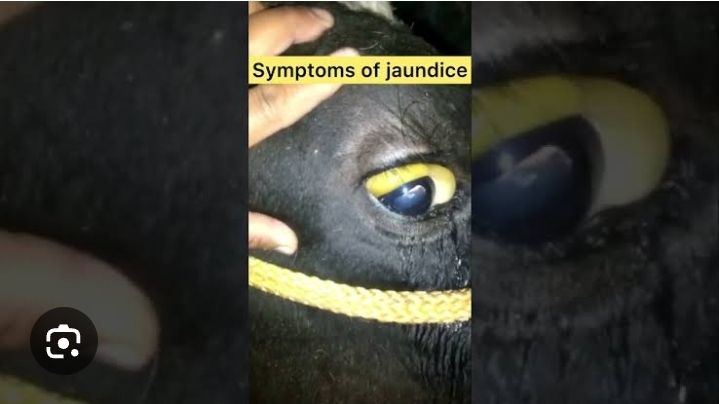
Babesiosis is a tick-borne disease that affects animals, particularly cattle, horses, dogs, and occasionally other animals like cats. It is caused by protozoan parasites of the genus Babesia. The disease is characterized by the destruction of red blood cells, leading to anemia, fever, and other related symptoms.
Key Points About Babesiosis in Animals:
- Causative Agent: The disease is caused by Babesia species. In cattle, Babesia bovis and Babesia bigemina are the most common species. In dogs, Babesia canis and Babesia gibsoni are common.
- Also Read about Mastitis Infections in Dairy Livestock
- Transmission:
- The primary vector is ticks, particularly those from the Rhipicephalus and Ixodes genera.
- Ticks become infected when they feed on an infected animal and then transmit the parasite to other animals during subsequent blood meals.
- In some cases, transmission can occur through blood transfusions or from an infected mother to offspring.

- Symptoms:
- Cattle: High fever, hemoglobinuria (red-colored urine), jaundice, anemia, and lethargy. In severe cases, it can lead to death.
- Dogs: Fever, weakness, pale mucous membranes, jaundice, dark-colored urine, weight loss, and lethargy.
- Horses: Fever, anemia, jaundice, and swelling of the abdomen and legs.
- Cats: Though rare, symptoms include fever, lethargy, and anemia.
- Diagnosis:
- Blood smear examination to identify the Babesia organisms.
- Serological tests such as ELISA.
- PCR (Polymerase Chain Reaction) tests for more accurate detection.
- Treatment:
- Antiprotozoal drugs like imidocarb dipropionate and diminazene aceturate are commonly used.
- Supportive care, such as blood transfusions and fluids, may be necessary in severe cases.
- Prevention:

- Tick control through the use of acaricides on animals.
- Regular checking of animals for ticks and removing them promptly.
- Vaccines are available for cattle in some regions but are not widely used for all species.
- Impact:
- Babesiosis can have a significant economic impact, particularly in cattle, due to loss of livestock and decreased productivity.
- In dogs, especially in areas where the disease is endemic, it can be life-threatening if not treated promptly.
Preventing and controlling tick infestations is critical in managing babesiosis in animals, as is prompt diagnosis and treatment to minimize the effects of the disease.
Control Measures and Treatment:
Controlling and treating babesiosis in animals involves a combination of preventive strategies, early diagnosis, and appropriate treatment. Below are detailed control measures and treatment options:
1. Control Measures
Tick Control
- Acaricides: Regular use of tick control agents (acaricides) is essential. These can be applied as sprays, dips, pour-ons, or collars, depending on the animal species.
- For Cattle and Horses: Common acaricides include organophosphates, pyrethroids, and amidines.
- For Dogs: Products containing fipronil, permethrin, or amitraz are effective.
- Environmental Control: Managing the environment to reduce tick habitats, such as clearing brush and tall grass, and treating animal living areas with acaricides.
- Tick Removal: Regularly inspect animals for ticks and remove them manually. This is especially important in pets like dogs and cats.

Vaccination
- Cattle Vaccines: In some regions, live attenuated vaccines are available for cattle, offering protection against Babesia bovis and Babesia bigemina.
- Challenges: Vaccines are not widely available for all species or regions and may have varying efficacy.
Preventive Medications
- Prophylactic Treatment: In areas with high risk, animals may be given preventive doses of antiprotozoal drugs to reduce the risk of infection.
- Vector Management: Regular monitoring and control of tick populations in endemic areas.
2. Treatment Options
Antiprotozoal Drugs
- Imidocarb Dipropionate:
- Widely used for treating babesiosis in cattle, dogs, and horses.
- Administered as an injection, it can also have a preventive effect when given at low doses.
- Side effects may include discomfort at the injection site, and in some cases, cholinergic effects like salivation.
- Diminazene Aceturate:
- Commonly used in cattle, dogs, and horses.
- Effective in clearing the parasites but must be used with care due to potential toxicity, especially in dogs.
- Atovaquone and Azithromycin:
- Particularly used in dogs, especially for Babesia gibsoni infections, which can be more resistant to other treatments.
- This combination is typically more expensive but effective.
Supportive Care
- Fluid Therapy: To combat dehydration and support kidney function, especially in severe cases.
- Blood Transfusions: May be necessary in cases of severe anemia.
- Anti-inflammatory Drugs: To manage fever and inflammation.
Monitoring and Follow-Up
- Regular monitoring of the animal’s blood parameters to ensure the infection is cleared and to assess the response to treatment.
- Follow-up treatments may be required in cases of relapse, especially in dogs where babesiosis can be chronic.
3. Integrated Management

- Combining tick control with vaccination and strategic use of prophylactic drugs in high-risk areas.
- Educating farmers and pet owners about the importance of tick control and early detection of symptoms.
- Quarantining new animals before introducing them to the herd to prevent the introduction of babesiosis.
Conclusion
Effective control and treatment of babesiosis in animals require a multifaceted approach. Regular tick control, use of vaccines where available, and prompt treatment with appropriate drugs are crucial to managing this disease. Additionally, maintaining good animal health through nutrition and minimizing stress can help in reducing the impact of babesiosis.

Leave a Reply